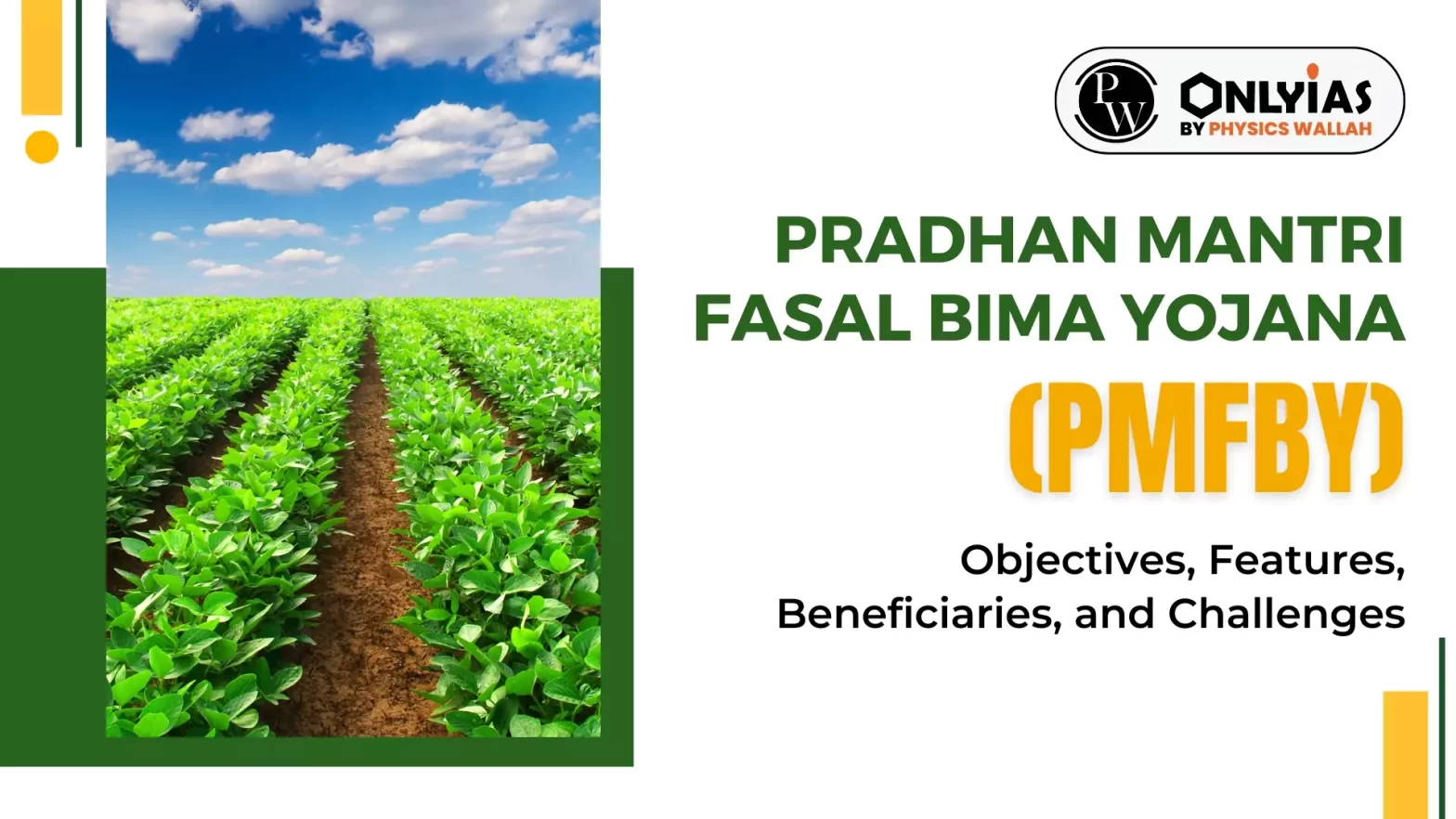![]() PWOnlyIAS
PWOnlyIAS
![]() March 07, 2024 11:11
March 07, 2024 11:11
![]() 1141
1141
![]() 0
0
According to Ministry of Agriculture and Farmers Welfare, enrolment under Pradhan Mantri Fasal Bima Yojana (PMFBY) has increased by 27 percent in financial year 2023-24 so far.

Context: According to the Ministry of Agriculture and Farmers Welfare, enrolment under Pradhan Mantri Fasal Bima Yojana (PMFBY) has increased by 27 percent in the financial year 2023-24 so far.
| Example |
| For instance, if a farmer has insured one hectare of land with a sum insured of Rs. 35,000, the insurance companies would typically charge an actuarial premium of Rs. 4,000. In this scenario, if the farmer cultivates Kharif crops on the insured land, their responsibility is only to contribute 2% of the actuarial premium, which amounts to Rs. 800. The remaining Rs. 1,600 is jointly covered by the state and central governments. |
| Categories | Description |
| Loanee Farmers |
|
| Non-Loanee Farmers |
|
| Must Read | |
| NCERT Notes For UPSC | UPSC Daily Current Affairs |
| UPSC Blogs | UPSC Daily Editorials |
| Daily Current Affairs Quiz | Daily Main Answer Writing |
| UPSC Mains Previous Year Papers | UPSC Test Series 2024 |
<div class="new-fform">
</div>

Latest Comments